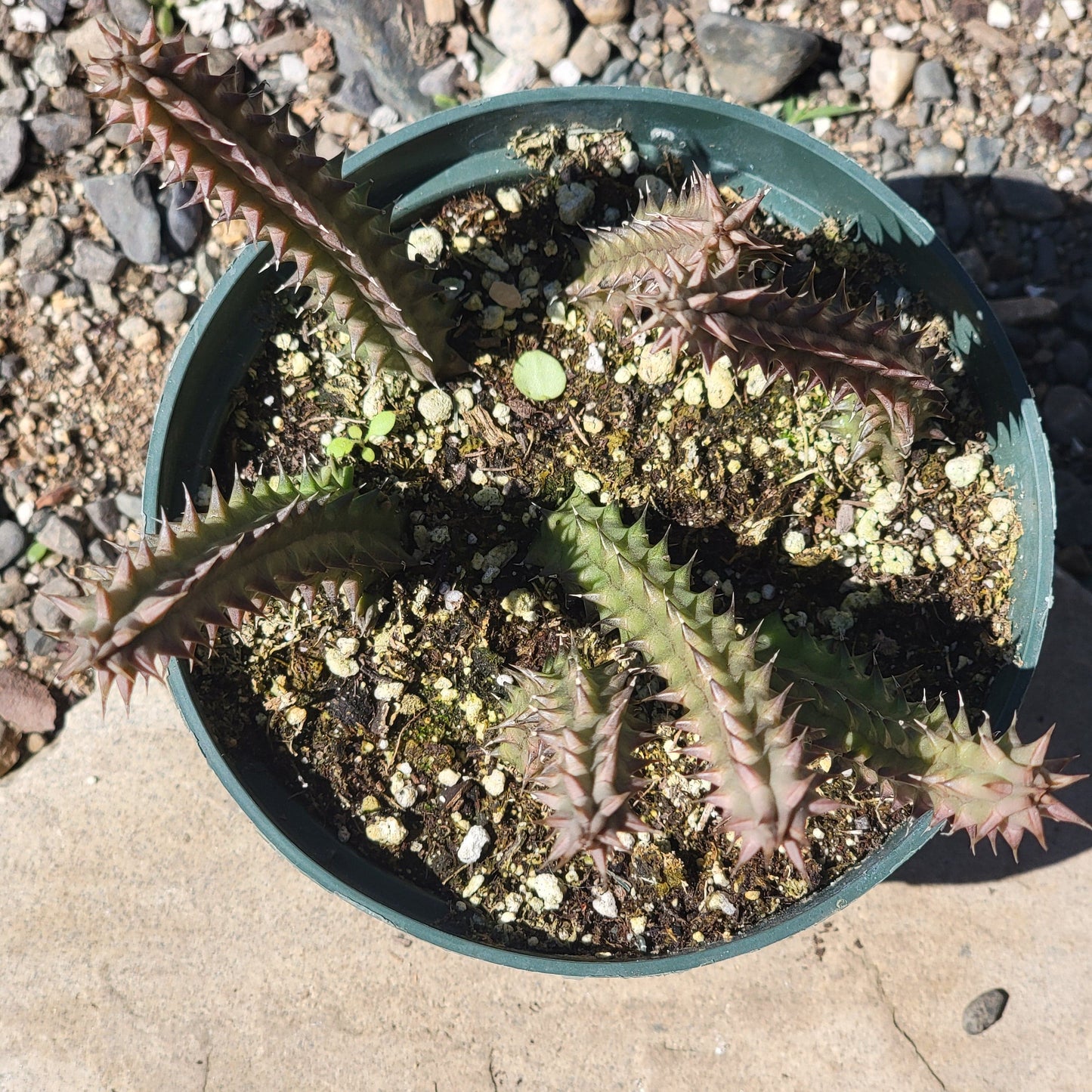Huernia schneideriana 'Flowers of the Toad'
Huernia schneideriana 'Flowers of the Toad'
Huernia schneideriana is a fascinating succulent native to Southern Africa, known for its star-shaped, fleshy flowers that resemble those of a toad or starfish, making it a truly unique addition to any collection. The plant itself features thick, grayish-green stems that are often mottled with purple or reddish markings, giving it an intriguing, textured appearance. The flowers are the main attraction, with their striking deep red or maroon coloring and a distinctive, leathery texture. These flowers emit a pungent odor, which attracts specific pollinators like flies, contributing to its unique charm. Huernia schneideriana is easy to care for, requiring well-draining soil and minimal watering, as it is drought-tolerant. It thrives in bright, indirect light and is best kept in a warm environment. While it may not be frost-hardy, its unusual appearance and low-maintenance needs make it an excellent choice for succulent enthusiasts looking for a conversation-starting plant.
The common name for Huernia schneideriana is "Flowers of the Toad" or sometimes "Lifesaver Plant" due to the unique, starfish-like appearance of its flowers. These distinctive flowers often resemble the shape of a toad or the patterns found on a lifesaver candy, which gives the plant its charming and unusual nickname.
Huernia schneideriana is often confused with Stapelia because both belong to the same family, Apocynaceae, and share similar characteristics, including their star-shaped, fleshy flowers. While they are distinct genera, they are closely related and share some similarities in appearance and care requirements. Like Stapelia, Huernia species typically have thick, succulent stems and produce large, fleshy flowers that can emit a foul odor to attract pollinators like flies. Despite the similarities, Huernia tends to have smaller, more compact flowers compared to Stapelia species.
Please Note: Plant will ship bare root with little to no dirt, you will receive a plant similar to the one in the photo.
Returns & exchanges: Not accepted
Please contact us if you have any issues with your order
Share



